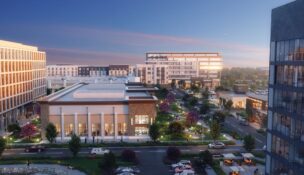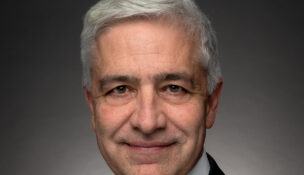Major construction project
Plans include space for wellness services and basketball teams
Virginia Business //March 29, 2019//
Major construction project
Plans include space for wellness services and basketball teams
Virginia Business //March 29, 2019//
New construction at the University of Richmond will bring wellness services together in one building and provide a training and performance facility for the men’s and women’s basketball teams.
Work will begin this spring on the project, which will include the Well-Being Center and the Queally Athletics Center plus an expanded and renovated Millhiser Gymnasium.
The project, which will include 70,000 square feet, is scheduled to be completed by fall 2020 at a total cost of $40 million.
Two new buildings will go up in the space between the Weinstein Fitness Center and the gym, which will be repurposed for sports programs and gain a second story for basketball staff offices.
“When you compete in Division I athletics, they say, if you’re standing still, then really you’re falling behind,” says John Hardt, UR’s athletic director.
The basketball building will provide “all the tools necessary to compete at the highest level” in the Atlantic 10 Conference, he says. Amenities will include a digital video coaching station, a full-size practice gym, an athletic training room with hydrotherapy, strength and conditioning areas, team locker rooms, and sports medicine and nutritional facilities.
A two-story entryway featuring images of all Spider athletic programs will be used for fundraising and receptions.
New era for fitness
The Well-Being Center will integrate the work of Counseling and Psychological Services, sexual-assault prevention, health and recreation into one concept, says Tom Roberts, associate vice president of health and well-being.
He describes the facility as an example of how old-school fitness has changed, “We had gyms, pools and weight rooms, but they were all dark and dungeonous,” he says. “They were not interconnected.”
Just as the Weinstein Center reflects the understanding of the importance of recreation and fitness, he says, the new facility will connect programs that focus on the physical and mental health of students.
The Well-Being Center will be “one-stop shopping for students,” with the health clinic on the second level and counseling services on the third, Roberts says. This will facilitate referrals for students who may go to see a nurse for a physical symptom when the real problem is emotional.
The center’s first level will offer amenities promoting wellness: a meditation garden, massage rooms, an organic-food café, an art gallery and a piano “for students to just play music when they’re inclined to play music and get something off their chest.”
‘They’re necessities’
Some people might think of these centers “as luxuries. But they’re necessities,” he says. “Students need to find ways to unplug. They need to find ways to be more mindful, and they certainly need to find ways to help their mental health.”
Roberts says mental health is increasingly a key focus on college campuses nationally as schools recognize the isolation that has resulted from students’ overusing social media and digital connections.
“They have lots of friends, but I don’t know that they’re the kind of friends I used to have,” he says.
So, more schools are integrating wellness services — William & Mary opened a center last fall — and taking a holistic approach to health that promotes the value of sleep, nutrition and mindfulness.
“We want to find ways to help students thrive,” Roberts says, and he believes UR’s new approach will do that.
“We don’t want them to come here just when they’re not well,” he says. “We want them to come here when they are well and keep coming back so they can stay that way.”
C
















